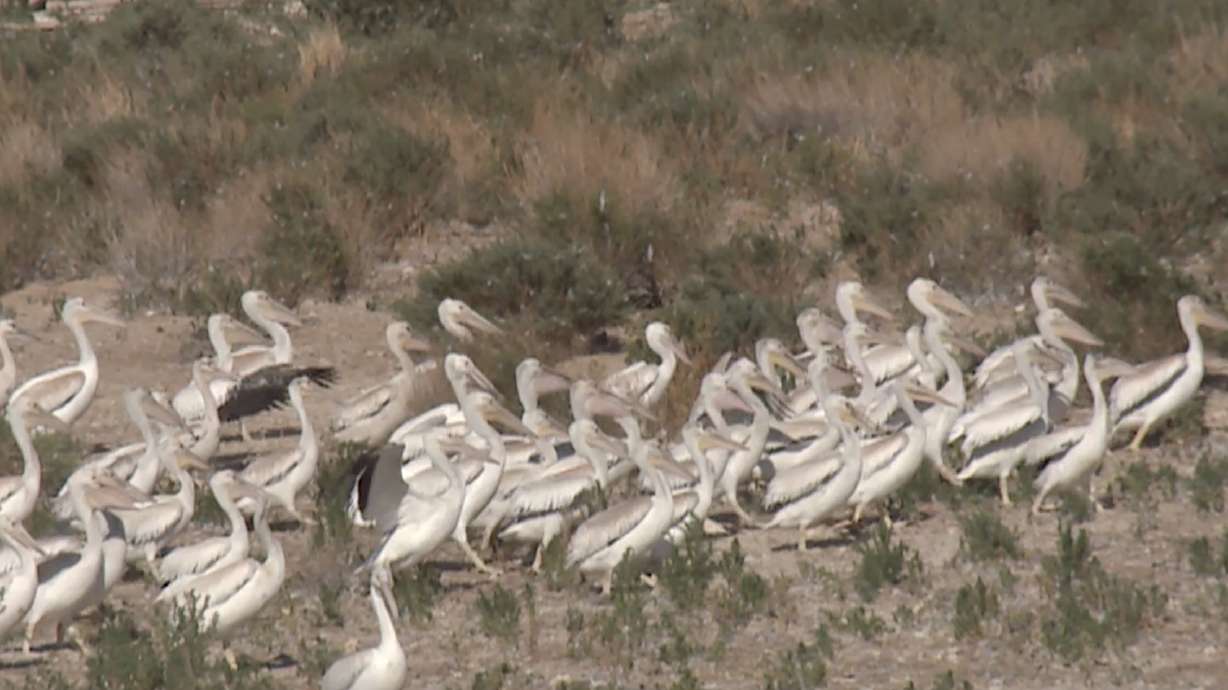Estimated read time: 4-5 minutes
This archived news story is available only for your personal, non-commercial use. Information in the story may be outdated or superseded by additional information. Reading or replaying the story in its archived form does not constitute a republication of the story.
GUNNISON ISLAND — In November 1895, Alfred Lambourne had dreams of a home and vineyard on Great Salt Lake's Gunnison Island.
He spent a mostly solitary year on the island, his only human visitors a group of men he called "guano sifters," who entered the island with their own dreams of mining heaps of bird droppings to sell as fertilizer.
Lambourne left the island early winter of 1896; his solitary life on Gunnison lasting about a year. His adventures and dreams of that year can be found in his book "Our Inland Sea: The story of a Homestead," published in 1909.
In his book, Lambourne said, "Here the gulls have nested for ages ... in the season this is the nesting ground, and the bays are then inhabited by crowds of screaming sea-fowl. The island, too, was the home of pelican and heron, but perhaps the presence of man will now keep these shy birds away."
Perhaps Lambourne's concern that the presence of man could adversely affect Gunnison Island and its pelicans has come to fruition 124 years later.
Gunnison Island Pelican Rookery
While others may have visited the island over the years since Lambourne's homesteading effort, the island's most popular visitor is the American white pelican. The pelicans have used the remote island as a rookery, which is a place to lay, hatch and rear their young. In the 1980s, the state of Utah took ownership of the 155-acre island and has worked to make it a protected wildlife management area specifically dedicated to protecting the pelicans. This made Gunnison Island a stronghold for migrating pelicans and off-limits to the general public.
Rare visits to Gunnison by Utah Division of Wildlife Resources personnel are made to band, tag and place GPS tracking monitors on some of the pelicans. This helps the DWR in its effort to study migration patterns of the pelicans and to help preserve their numbers. Through the tags and monitors, DWR personnel discovered that adult pelicans travel quite a few miles to find their favorite food (fish) for the young they are raising on Gunnison Island.
Pelicans using Gunnison as a rookery have been spotted at Bear River Bird Refuge to the north and Utah Lake to the south in search of fish. The Utah Division of Wildlife Resources has a program called PeliTrack. Some pelicans marked with green tags and GPS tracking devises have been given names and their migration patterns can be followed on the DWR PeliTrack website.
Visiting the island through remote cameras
The DWR, in partnership with several other organizations such as Westminster College, University of Utah MesoWest Group, Tracy Aviary and Great Salt Lake Audubon, have purchased and installed cameras on Gunnison Island to help monitor and collect data to help preserve and maintain the pelican rookery. Through these efforts, it is estimated that historically up to 20,000 American white pelicans use the island in the spring as a rookery.
If you have an interest in Gunnison Island and the pelican rookery, you can visit the island through the remote cameras. The University of Utah MesoWest Group has a weather station and cameras placed on Gunnison Island. The website shows current weather conditions and photographs of the island as well as archived photos. If you look at the photos in April and May, you can see the nesting pelicans.
The Westminster College website gives more information about the PELIcam and how the public can get involved in helping spot and document the migration of the pelicans.
Low Water Trouble
The remoteness and waters of Great Salt Lake make Gunnison Island an almost perfect place for a pelican rookery. Pelicans have a measure of safety from human interference and protection from predators. The only menace has been from pesky seagulls able to access the island from the air.
With the low water level of Great Salt Lake in recent years, Gunnison is no longer an island. The exposed land has allowed access to the island by coyotes. Coyotes have been spotted on the island by visiting scientists and researchers. The cameras on the island have also picked up the visiting coyotes. This spells big trouble for the rookery. Last year, researchers reported the lowest numbers of pelicans using Gunnison as a rookery since monitoring of the pelicans began.
As drought continues, and precious water from rivers and streams are diverted away from the Great Salt Lake for the Wasatch Front, other creative measures may be needed to ensure that the use of Gunnison Island by the pelicans can continue.








